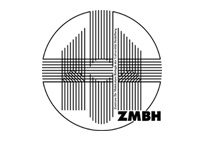The element nitrogen is an indispensable component of all living organisms and must be added in the form of fertilizers in agriculture to enable long-term high yields in food production. However, the production and application of these fertilizers is energetically and ecologically problematic, so that for many years intensive efforts have been made to transfer the natural nitrogen fixation realized in bacteria and archaea by the enzyme nitrogenase to crops and thus make the use of synthetic fertilizers superfluous. One of the most serious problems herein is the extreme sensitivity of nitrogenase to oxygen in the atmosphere, which is further complicated by the fact that this oxygen is produced by the plants themselves in the process of photosynthesis.
SFB 1381 PI Oliver Einsle (A04) and his team have now been able to show by cryo-electron microscopy, how a small factor, the ‘Shethna protein II’, can register an increase in oxygen concentration and then very quickly form a complex with the two components of the nitrogenase enzyme, which protects them from oxidative damage. After activation, Shethna protein II binds the much larger nitrogenase and its associated reductase and forms long filaments with both proteins in which oxygen cannot reach the active centers of the nitrogenase. As soon as the cells overcome this oxygen stress, the complex dissolves and the enzyme can resume its work.
Even if nitrogenase is produced directly in plant cells, such short stress phases with increased oxygen concentrations can be expected to occur repeatedly. The co-production of the small Shethna protein II can then help to protect the elaborately synthesized enzymes in their new environment and maintain their function for the plant cell.
The study has been published in Nature and can be assessed here.
Illustration: Complex formation of nitrogenase with Shethna protein II. A) Cryo-EM reconstruction of the complex of reductase (green), nitrogenase (brown) and Shethna protein II (blue). B) Electron micrograph of the clearly recognizable, oxygen-protected filaments. C) Reconstruction of the entire filament.









